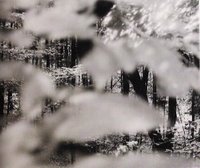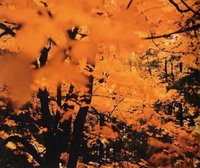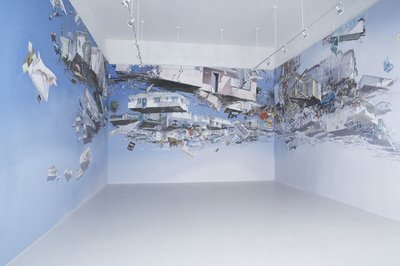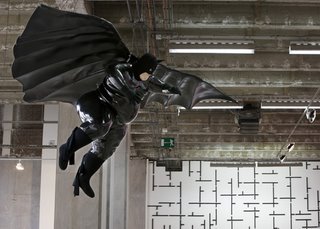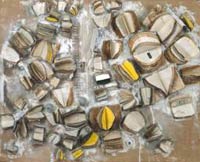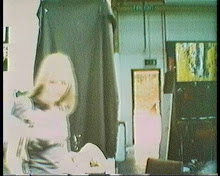


I think I've pretty much finished with the book project for the moment. There's only so much more I can take of cutting up books and sticking them back together again.
The whole reason I started this project was because of today's mass production of books, magazines and the internet, written words loose their meaning and I don't like the fact that books become less important and precious as they were once regarded. They have now become the literature equivalent of IKEA furniture. Mass produced, cheap quality that can be found everywhere. By taking some cheap books and cutting them up, burning them and taking them apart, I've reversed their function and given them a whole new purpose. Every time someone reads them, they come up with their own interpretations and stories from the words and jumbled sentences that have been created from the cut up pages inside. Each book becomes something different to each viewer, and will say something different to each reader.
I was recommended to read some work by the French writer Gaston Bachelard and even though it was a tough read, I quite liked some of his concepts and its given me a few ideas of what to do next. His book, 'Poetics of Reverie' talks a lot about what we think about when day-dreaming and the impact of being lost in our thoughts and it is quite fascinating but it's the parts about our childhood memories that interested me.
'The child sees everything big and beautiful. The reverie toward childhood return us to the beauty of the first images'
I love the way that even the smallest things can be so much more wonderful and fascinating to a child than to a grown-up. It's still all so new and exciting to them and they appreciate things and look at things in a completely different way than what adults do and it's a shame that not everyone still sees things with the same enthusiasm anymore.
I also read a tiny bit of Bachelard's other book 'Poetics of Space' which deals with how we interact with intimate spaces. There was a whole chapter on wardrobes cupboards and drawers and I liked what it said about how a wardrobe or a chest of drawers can be very intimate spaces, not open for just anyone to look at which is why its a great place to keep or hide our secrets. He also mentioned a bit about how certain smells or sounds will trigger particular memories in our minds which, again, interested me.
'Images, smells and sounds are stored in the brain in keep-sake boxes that preserve fragments of the past'
'Memory is a wardrobe'
I was thinking of maybe combining the smells/sounds of memories and the whole wardrobe/drawers idea to sort of create a box of different memories from my past, and what triggers them. It'll be a lot more personal than the books but I'll still have to think more about it.


